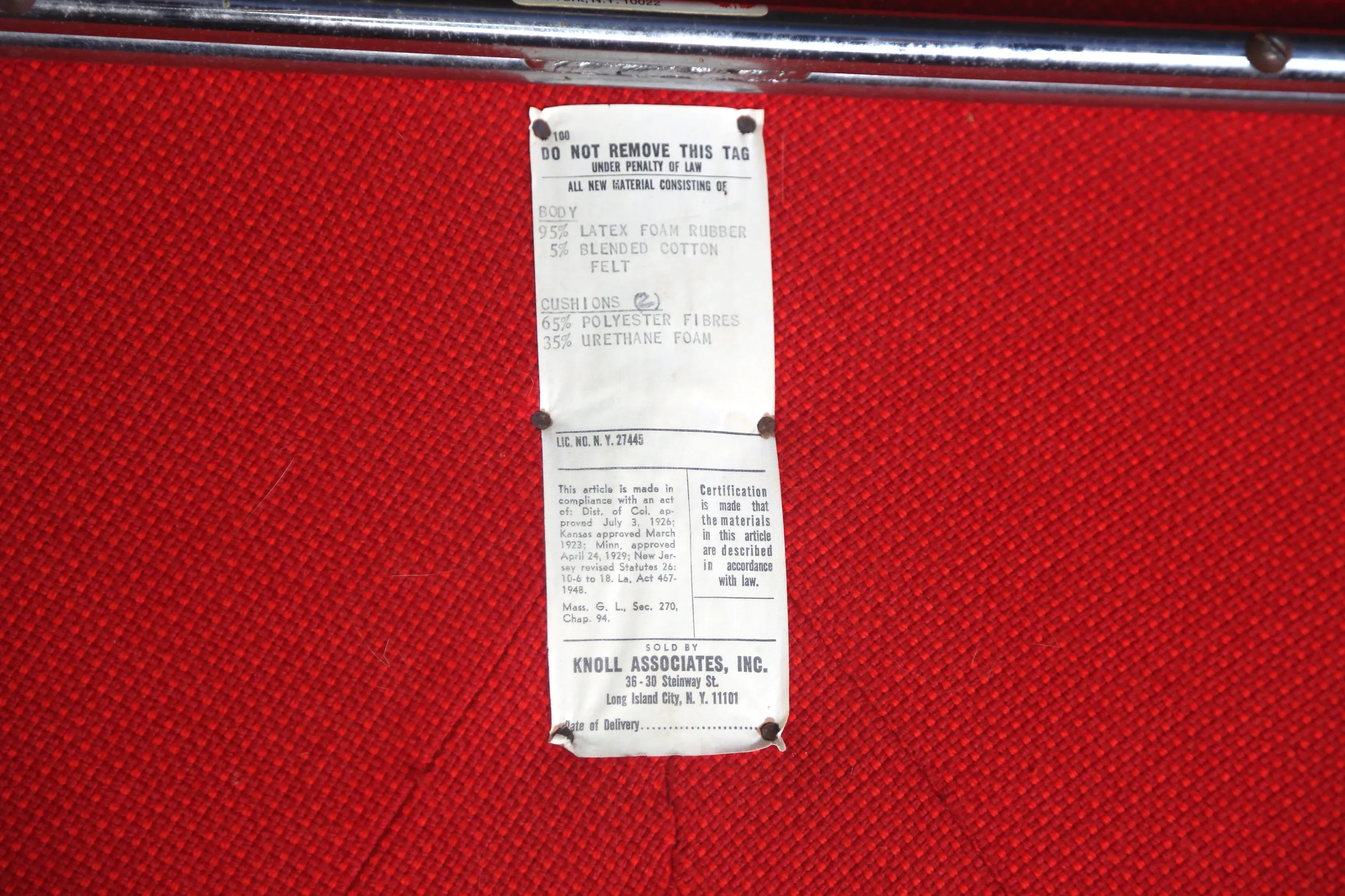GUEST: I got this piece from the Hefner Mansion in Chicago when the contents were sold to the faculty at the School of the Art Institute. And I was faculty at the School of the Art Institute at the time, so we got first crack at the contents of the Hefner Mansion when it was being sold, and was able to get this piece and the matching chair and ottoman.
APPRAISER: How much did you pay for all of it?
GUEST: If I remember correctly, at the time, all three pieces were $1,000.
APPRAISER: And what year was that?
GUEST: I want to say it was 1990 or 1991.
APPRAISER: So this was designed by Eero Saarinen. One of his most famous works is the St. Louis Gateway Arch. And also, many people who have traveled have gone through Dulles International Airport and the TWA Terminal at JFK. He's primarily known today as an architect, but because he grew up on the campus of Cranbrook that his father ran, he had architecture and design in his blood. Eero Saarinen is one of the few architects or designers of the 20th century that was a son or daughter of a famous designer that actually eclipsed their father's success. Eero, who died very young in 1961, had already accomplished so much in a very short period of time to become one of the best-known architects in America working at that period. This is what's known as the Womb Settee or the Womb Sofa. It was meant to associate you with this comfortable, enclosed, maternal sort of enveloping. It's based on a design that was first released by Knoll in 1948 called the Womb Chair. The settee is basically a stretch version. The settee is meant for two people. And now I've got all these images of two people at the Playboy Mansion sitting in this, and you can imagine bunnies and businessmen and Hef and his cohorts cavorting...
GUEST: You can imagine, indeed. (laugh)
APPRAISER: Hefner was very interested in interior design. And in his magazine, he actually did a double-page spread, a centerfold, if you will, of designers such as Eero Saarinen, Charles Eames, Harry Bertoia, Jens Risom, and others that gathered together at the Playboy Studios.
GUEST: Fabulous.
APPRAISER: And it's a double-page centerfold spread in "Playboy" about furniture and design. Because these were made for a long period, collectors tend to want ones that are the rarest, meaning the ones from the earliest period. And we know that this is pretty much the middle period for a number of reasons. Number one, it has a label. This is a Knoll Associates label, with a New York address, and we think that this label was used between about 1950 and late 1970s. Also, we've got hand-stitching around this edge, because to get this curve just right was very difficult and almost impossible for machining. Another element that sticks out as middle-period is these self-leveling floor glides. Originally, this leg would terminate in a flat welded disc. This is how they make them today. We know that this piece was made sometime after 1950. The design of the sofa was actually intentionally casual. It was meant for someone to sit on so that you could change positions regularly, so you would be more comfortable. I'll demonstrate. Many times, chairs were designed to sit straight up. but he actually designed this, with these arms and this back, so that you could be a little bit more casual and put a leg over the side. Was it in this condition when you bought it?
GUEST: More or less. It's been part of my home for all that time since. It's endured kids and cats and the daily wear of just being part of the family.
APPRAISER: So if we didn't know anything about the provenance, in this condition, I would say it was worth about $1,800. I think with the provenance, at a well-publicized auction, just this piece alone I would say would easily sell between $4,000 and $6,000. And for a "Playboy" collector, or if we could find some really great images of this in the mansion, I think you could see this maybe going up to the low $10,000 figure.
GUEST: Wow, wow.













